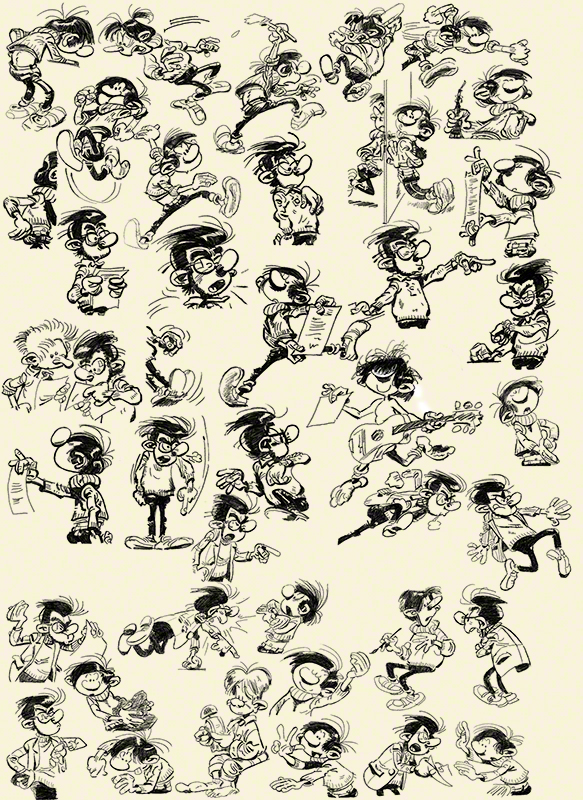Week two of Figure one is about spheres, seeing spheres in what we draw, seeing lines going around the object we draw, even imagining they are made of glass and we can see the wireframe of the object like in a 3D software.
Indulge me a second while I talk about me – which is not the topic of this blog (the topic is learning to draw with Glenn!).
Having done this course 4 times already, I was approaching this week without fretting: I planned on making studies of my favourite “old” master Franquin (european comicbook artist, genius, left us around 1990). Also, I had been studying, copying him for ages now, and I was planning on a routine week with a little bit of improvement ahead, but nothing to write home about.
I started working and… after two days I had the most amazing dream at night: the world around me was entirely made of balloons, like those balloon dogs clowns make for kids. In fact my dog, my house, everything in the street was made of balloons but one piece baloons, without the twisted knot-like bits that make the clowns’ work hold together.
Was my subconscious mind seeing something new?
The last time I had a dream related to my drawing studies, I had the same dream for 3 nights in a row: I was arranging giant lines of pencils so they would be where they should, I had to hand push them into place, and they were big and heavy above me. The “big line” dream had coincided with a big progress in my understanding of lines.
Would my balloon dream be a good sign too?
Well, before I go into detail about what I understood (’cause yes, I made progress!) here is my submission :

What did I finally get? Well Glenn found that I had incredibly improved the quality of my lines (oddly lol) and that I had the spheresso much better now – a real jump forward!
Now if you look at any of these studies of Franquin (several albums of Gaston Lagaffe, can’t remember which ones as I have them all piled on my desk) and if you concentrate on the sleeves of the characters, you’ll see that all the lines describing the pull on the cloth, the fold, the tension, all of them also describe….. sphericity! it’s very subtle, but look at the end of the sleeves, at the bottom of the sweaters and jackets: all lines end in such a way that they let you know they carry on to the other side of the character in a curvy way! That is enough to tell the viewer’s mind that this shape, I.e. the arm or the torso, is spherical, is 3D and not a flat collection of flat stains on a flat paper.
Look now at the hands!!!! Only some of the fingers have a nail on them. Why? Well first of all the brain knows hands have nails, so there is no point drawing them all, also nails follow the curvature of the finger. Franquin, genius that he was, added a nail only on fingers that were not easy to read due to their foreshortened position, thus indicating a circle around the finger (ok: part of a circle) and making the form of the finger perfectly readable (and making obvious the character had perfectly normal nails ).
Glenn did demonstrated both in the draw-over crit and in the two hour chat the way Leonardo da Vinci often sketched by drawing a long spring-like spiral for the arm or legs of a character. The axis of the circles making the spiral and their changes indicated clearly the direction and changes of directions of the arm or leg.
Of course that is a fast sketching method, but it works, and when you do more refined work (cleaning your sketch) you can use just a few bits of spheres).
This all proves that by working again and again on a way to see or to do things, you assimilate the technique.
Next week: boxes! the opposite of seeing the figure as made of spheres, is to see it as made of boxes – what can we learn from those two opposite ways of thinking of the same thing?
Read all about it next week, but meanwhile: go and draw!
have fun !
Anton
